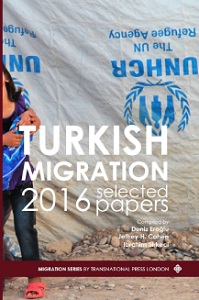Working Rights for Refugees: A Comparison of the Turkish and the Australian Models in Achieving Humanitarian and Labour Objectives
Working Rights for Refugees: A Comparison of the Turkish and the Australian Models in Achieving Humanitarian and Labour Objectives
Author(s): Rodger Fernandez, Ali Zafer Sağıroğlu, Sherene Özyürek
Subject(s): Geography, Regional studies, Civil Law, Human Rights and Humanitarian Law, Labor relations, Migration Studies
Published by: Transnational Press London
Keywords: Turkey; migration; refugees; Austria; humanitarian and labor objectives; working rights;
Summary/Abstract: The paper begins with a quantitative analysis of the changes in refugee’s situation over the past 15 years with a discussion on major refugee holding countries. Then a specific quantitative analysis of the role of Australia and Turkey’s history of accepting and resettling refugees will be explored. This is of particular interest as it will demonstrate that three modulating factors, namely, the historical background of the host country, its proximity to troubled regions and its political environment, could have contributed to the changing roles of both countries in resettlement of refugees over the past 15 years. Subsequently, a comparative analysis approach encompassing a qualitative analysis will be used to compare new laws adopted by both countries to provide working rights for refugees, namely Turkey’s Regulation on Work Permit of Refugees under Temporary Protection in January 2016, and Australia’s adoption of Safe Haven Enterprise Visa (SHEV) in July 2015. Both Australia and Turkey’s introduction of their respective law whilst only provides temporary protection does extend the current rights to provide working rights.
Book: Turkish Migration 2016 Selected Papers
- Page Range: 15-25
- Page Count: 11
- Publication Year: 2016
- Language: English
- Content File-PDF

